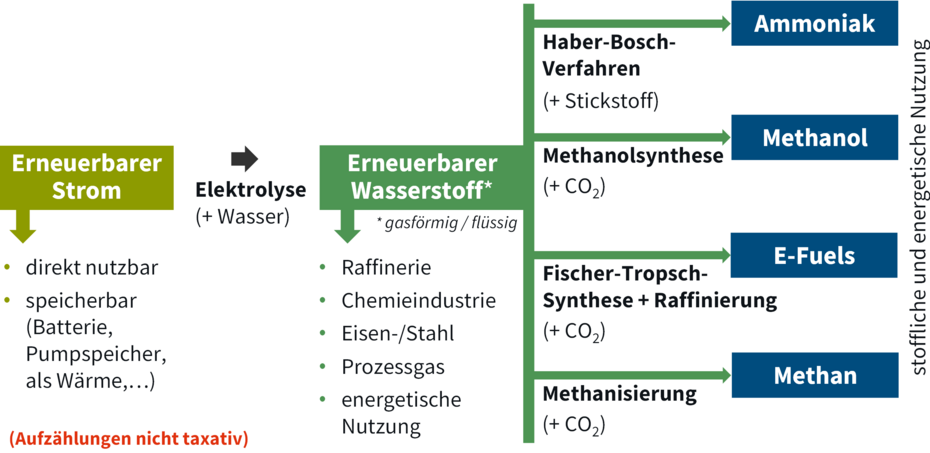Hydrogen is ...
Generation | Transport | Storage | Use
The energy transition is necessary, challenging, achievable and brings with it great opportunities for Austria as a business location. It goes hand in hand with a reduction in energy consumption - realised with a strong focus on efficient technologies. A sustainable supply based on renewable energy sources plays a central role across all sectors - from electricity and heat supply to industry and mobility.
Wherever possible, electricity should be utilised directly. There are sensible areas of application for hydrogen where this is not possible or only possible with difficulty.
Climate-neutral hydrogen is therefore an important building block of the energy transition, which can ensure climate neutrality in sectors that are difficult to decarbonise through various technologies and possible applications and can significantly support the path to a renewable energy system.
As one of the most common elements on earth, hydrogen (H2) occurs in its elemental form almost exclusively as a trace element in the earth's atmosphere - chemically bound hydrogen, on the other hand, is omnipresent in countless organic and inorganic compounds.
Hydrogen can therefore be produced in various processes from pure water to biogenic or fossil raw materials.
Currently, by far the most common method of hydrogen synthesis is methane steam reforming, in which natural gas is processed into hydrogen by emitting CO2. This method is emission-intensive and therefore cannot contribute to achieving climate neutrality.
Electrolysis, on the other hand, uses electricity to split water into its components H2 and O2 (oxygen), allowing gaseous energy carriers to be produced with the help of electricity.
Hydrogen that is produced exclusively from renewable energy sources (usually on the basis of renewable electricity, also on the basis of sustainable biomass) is considered renewable or green hydrogen and qualifies as climate-neutral. Against the backdrop of the energy transition, this scalable form of production is the preferred method of choice.
In addition to renewable hydrogen, blue hydrogen or turquoise hydrogen can also make a contribution - assuming the corresponding technological maturity and actual climate neutrality.
Electricity is versatile. It can be utilised and stored directly, including in the form of hydrogen. Hydrogen, in turn, is also extremely versatile. It can either be used itself for energy or material purposes, or the hydrogen is the starting product for a variety of different derivatives, such as ammonia, methanol, e-fuels or synthetic methane.
Each additional conversion step is associated with energy losses of around 15 to 35%. In addition to hydrogen, many processes also require other raw materials such as carbon or carbon dioxide (CO2) or nitrogen (e.g. in the production of ammonia).
In addition to electrolysis, which uses electricity to break down water into its components (hydrogen and oxygen), there are other production technologies that are described in more detail in our fact sheet on "Hydrogen colour theory".
An electricity-focused overview of the various ways in which electrolysed renewable hydrogen can be further processed:
Electricity-based renewable hydrogen and possible derivatives
(Source: Austrian Energy Agency)
